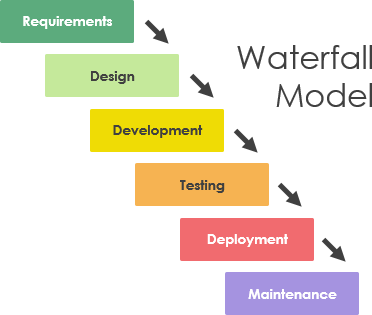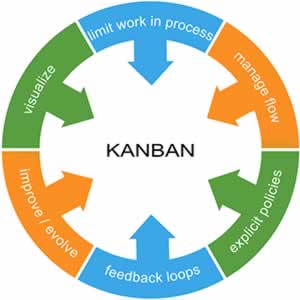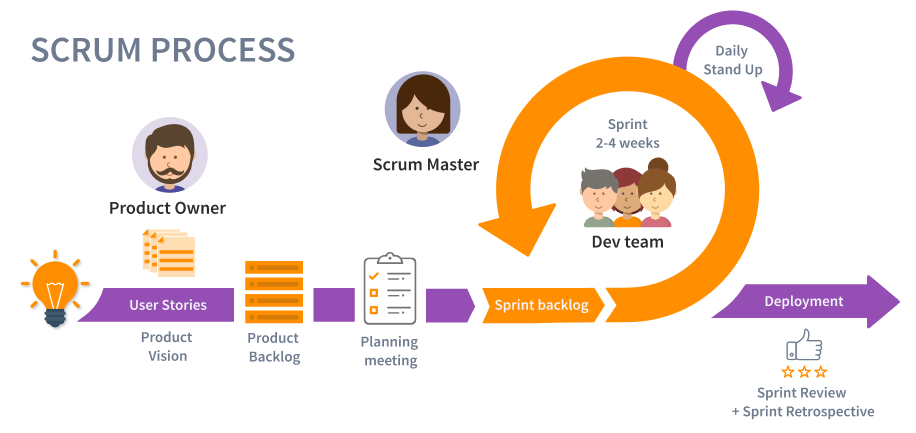
Project management in the field of IT has its own characteristics and peculiarities. Therefore, different approaches, i.e., methodologies, are used to develop software products. In order to choose the appropriate one for your case, you need to consider the specifics of the project, such as timeframe, budget, client and developer preferences, etc. In this article, we will talk about the basic methodologies according to which the development process and further software testing is built.

One of the first methodologies used to combine principles, ideas, and methods to work on a project was the Waterfall Model. Despite the emergence of newer approaches, it remains relevant to this day and is used not only in IT development. It unfolds its full potential on small projects where it is easy to define all the requirements and instructions. After that, it is necessary to adhere to the sequence in work, that is, do not take on the next task or stage if the previous one is not completely ready. It does not imply testing or making any changes and edits to part of the project, which can significantly reduce costs.
Of course, the waterfall methodology has both pros and cons. Thanks to the use of this methodology, the development process becomes clear and understandable to everyone. It is convenient to create and maintain reports. There is stability and understanding of the tasks that need to be performed. However, in some cases, this approach lacks the flexibility and ability to change functionality and conduct testing at an early stage, so all the shortcomings will have to be corrected at the end of development. In general, this methodology is recommended for small IT projects and finds application in aviation, medicine, the financial sector, etc.

Therefore, it is not surprising that a methodology was created based on completely opposite principles in contrast to the waterfall. The Agile approach includes interactive development, the formation of requirements depending on results, and constant interaction between specialists. Thus, you can minimize risks in software development due to a quick response to changes and respond to changing conditions and customer feedback. In Agile methodology, all work is broken down into sprints, which are short intervals of 2-4 weeks. During this time, a full cycle takes place from planning to development testing and documentation. The resulting developments are presented to the client, who can quickly respond to changes and make their own edits.
The flexibility of the Agile approach helps in cases where there is no vision of the result, and understanding can only come during development. Also, this approach will work if you plan to launch the product quickly and then refine it. If you choose this methodology, you will need to keep in mind its basic principles, such as the importance of interaction between people, willingness to change, and finally, that a working product is more important than writing all the documentation.
Among Agile approaches, such concepts as Scrum and Kanban are also distinguished. Scrum can be defined as a more structured approach. The Scrum method divides the workflow into sprints from a week to a month. Before the sprint, tasks for this sprint are formulated, and at the end, the results are discussed. It is important to note that the result of work in this methodology can only be considered a result that brings some value. That is, it is ready for use. This simplifies the task of managing performance and allows you to adapt to new customer requirements quickly.

As for Kanban, this is an approach that uses special cards to ensure that the necessary balance of tasks and workloads between all team members is observed in the workflow. There are no sprints in Kanban; there are several columns with the names “To Do,” “In Progress,” “Completed,” etc. If there is a delay in completing tasks, you can see this in time and provide the necessary assistance. The visibility of the progress of work is one of the main advantages of methodology. However, if the team is large, then the workflow will become more difficult to control. Therefore, it is better to use Kanban for short-term assignments.

By the way, both Scrum and Kanban use boards for visualization so that each team member sees the progress and understands what stage the development is at. Although today there are many electronic whiteboards, such as Trello, the real whiteboard has not yet lost its relevance.
So far, a universal methodology that works for all projects has not yet been invented, and each of the control systems has its own strengths and weaknesses. Therefore, you need to choose the most suitable approach for solving your project’s problems.





